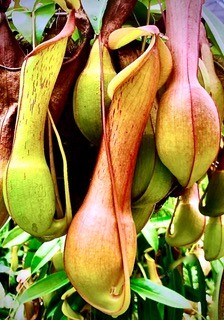March 17th, 2022Glen, About the house
Plant movement in your garden
Even if you look at your plants every day you more than likely feel that there is almost no movement in them – save the rustling of leaves in the wind.
You realise, of course, that there is a slow upward and outward growth in place, but except in a few Jack and the beanstalk plants, especially vines, and because our climate is hardly tropical, without the aid of a stop motion camera to speed things up, it is all too slow to even be considered as movement at all.
Some plants have a regular cycle for opening and closing their blooms, unlike most flowers which stay open from the time they leave the bud stage until they fade and begin their seed ripening process.
The beautiful, highly-scented flowers of the night-blooming cereus peruvianus, also known as Peruvian apple cactus, last for only one night and never re-open.
Another one day wonder is the vesper iris (iris dichotoma) which opens mid- afternoon and lasts only for that day, never to re-open its pretty little lavender flowers until next season. All of which ensures they are never likely to run rampant and rule the earth.
The four o’clocks are the mirabilis jalapa, which take their name from the fact that they open around four o’clock in the afternoon until sometime in the morning, when they close again to re-open again the next day. Many other flowering plants actually open by day and close by night.
It’s really among the insect-trapping plants that we actually see definite and fairly fast movement. The best known example of this is the Venus fly trap (dionacea muscipula), a perennial herb found only in the Carolina swamps. At the base of each 30cm long flower stem is a rosette of hairy leaves consisting of two parts with a hinge between them. The leaf closes within a second to enfold and trap any insect that lands on them, until it dies and its body juices are absorbed.

There are many other physically trapping carnivorous plants growing world wide and others that rely on sticky solutions, or as in the case of the pitcher plant-nepenthes (pictured) and sarracenia, entrap their prey in pitfall traps featuring a deep, inescapable cavity filled with an attractive digestive liquid nectar. These plants attract and drown their prey with that nectar.
Twining vines present an amazing, albeit rather slow movement in as much as certain genera twine from right to left, whilst other such as the polygonum species and the pseudo-fern asparagus plumosus, proceed from left to right. Among the many right to lefters are the morning glory and scarlet runner beans. This spiral twisting of the plant stem is called nutation. No matter what you may do to attempt to reverse this natural direction of twining, the plant will continue to twist its support only in its predetermined direction.
Helianthus, the sunflower, when in bud and with its supple stems, will turn to follow the sun across the heavens
The king of all plants for rapid movement is mimosa pudica – the sensitive plant – which to the amazement of children, responds to the lightest tap on their leaves by folding together. A heavier tap causes the stem to droop down. They resume their normal positions after a few minutes.
The leaves, along with other sensitive plants, including peas, beans and several other groups, react to less intense light before closing their leaves in early evening to reopen in the bright morning sunlight. This is called sleep movement, but really has nothing to do with actual sleeping.
Got a gardening question: Email glenzgarden@gmail.com










